How & When to Plant Corn: 4 Simple Steps
-
Shea Cummings
- Last updated:
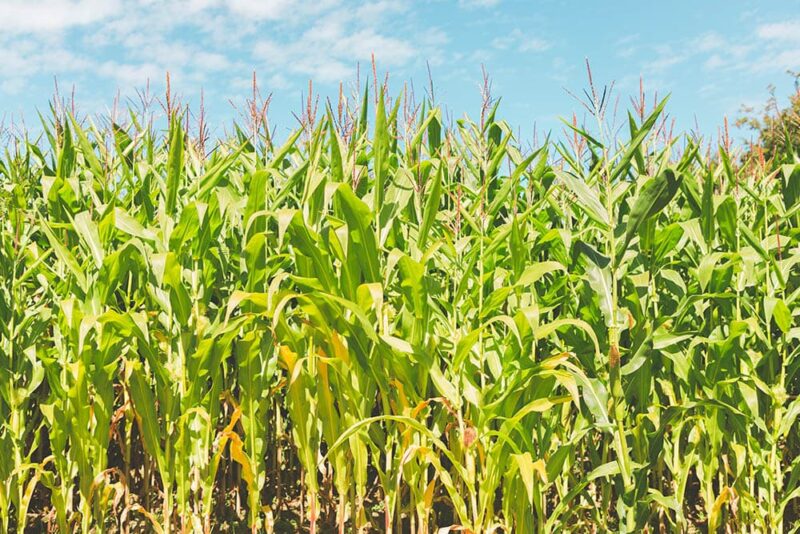
Corn has been grown and cultivated in North America for thousands of years. Corn on the cob, creamed corn, or popping corn; there are almost endless things you can do with corn. While it’s primarily grown commercially, several varieties are suitable for growing in your backyard.
As long as your climate provides the heat corn needs and you don’t plant it while there’s a risk of frost, most home gardeners can successfully grow their own corn. If you’re planting other things alongside corn, there’s a bit of extra planning involved, though.
When to Plant Corn
Depending on the variety you’re growing determines exactly when to plant the corn because there are three main varieties: early, mid, and late-season harvest.
The early-harvest corn matures the quickest, so you can plant it later in the season. This is beneficial if your climate has a shorter growing season. On the other hand, a late-harvest variety takes the longest to grow, so you can only plant it if the frost is gone in early spring.
No matter what variety of corn you decide on, they all share one significant thing in common: they are highly susceptible to frost damage.
As a general rule, you want to wait at least 2 weeks after the final spring frost date to ensure all risk of frost overnight is gone. Also, you can ensure the ground is warm enough by placing a black plastic cover over the area you’re sowing with corn.
If you need to warm the area, you can actually sow the seeds through holes in the plastic and remove the cover when the soil is warm enough.
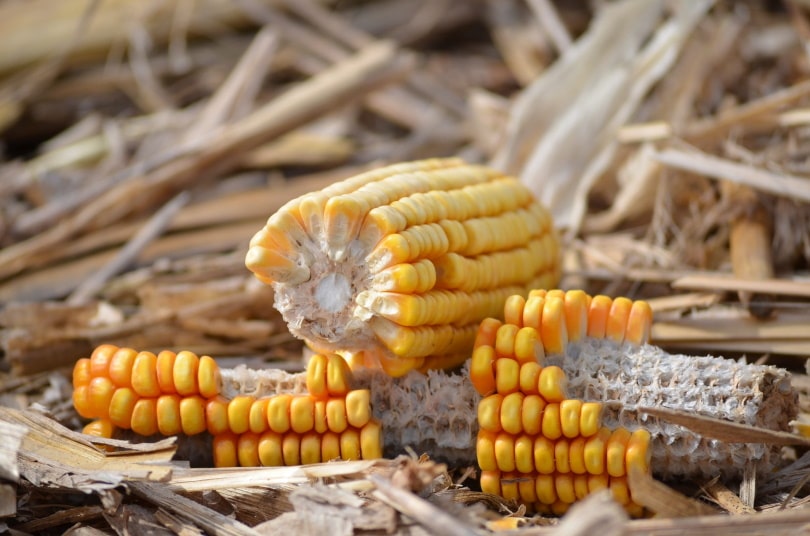
Things to Keep in Mind When Planting Corn
- Because their roots are easily damaged, it’s not recommended that you start your corn plants indoors in pots. However, if that’s the only way to grow them in your climate, then make sure you use biodegradable pots to prevent the need for transplanting.
- In addition to not liking frost, corn seeds also need the correct soil temperature for germination. Typically the seeds require at least 60° F (16° C) soil. Some varieties need soil temps a few degrees warmer yet. Consult your seeds package to figure out your plant’s needs.
- There are a couple of things you can do to get an extended harvest. First, you can plant a second crop of corn a week or two after the first round. Or you can also plant different harvest types to spread the corn maturity through most of the growing season.
The 4 Steps on How to Plant Corn
Other than ensuring the timing is right, there isn’t much to planting corn.
1. Pre-Moisten Seeds
Some plants do better if you soak the seeds. With corn, you don’t want to soak them. However, wrapping them in a moist paper towel and placing them in a plastic bag for a day before sowing will speed up germination.
2. Sowing the Seeds
Germination rates sit around 75% for most corn varieties. So, you’ll want to sow seeds 4–6 inches apart and 1.5–2 inches deep. Some gardeners say a little bit further, but it’s best to do whatever is recommended on the seed’s package. Also, when planning your garden, plan to keep rows around three feet apart.
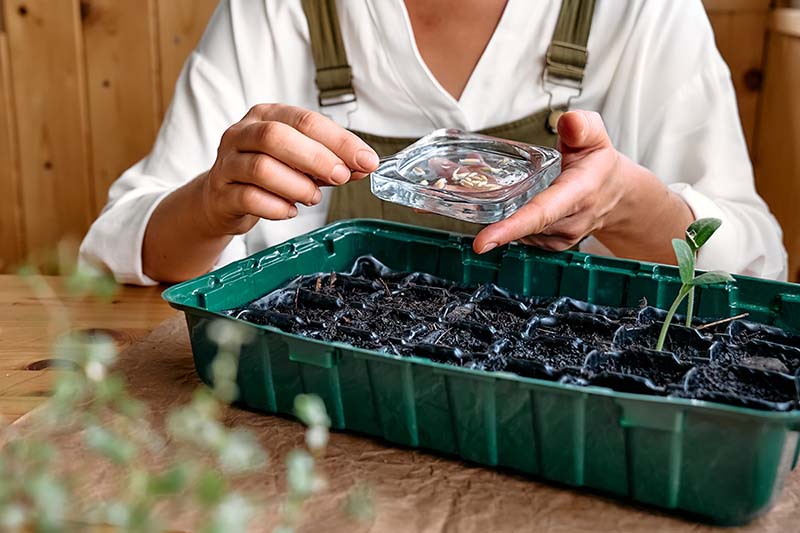
3. Fertilize
Corn is a rapidly growing plant. When sowing the seeds, it’s not a bad idea to use a quality 10-10-10 fertilizer. But you can use your judgment on this step. If the soil is healthy, you may be able to skip fertilizer when planting.
4. Water
To germinate and begin its growth, corn needs to be well-watered. When you plant the seeds, ensure that you water them well. Don’t go overboard and leave lakes, but you want the soil to be soaked.
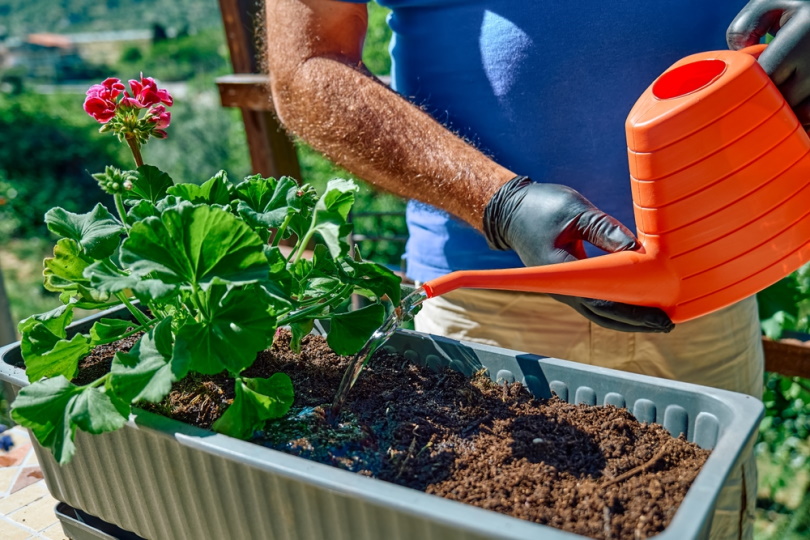
Looking After Corn Plants
Here are a few things to keep in mind as you look after your new corn plants.
Watering
Throughout its growth, corn needs around an inch of water per week. Keep in mind when watering to water the soil at the base of the plant, not from the top. Watering from the top can wash away the pollen once the plant grows and flowers.
Weeds
In addition to being sensitive to transplanting, corn roots are also susceptible to weeds. This is especially true in the plant’s first month of growth. Eventually, the roots spread out, but they must be nurtured until then. Killing weeds quickly and preventing their growth is important to your corn thriving.
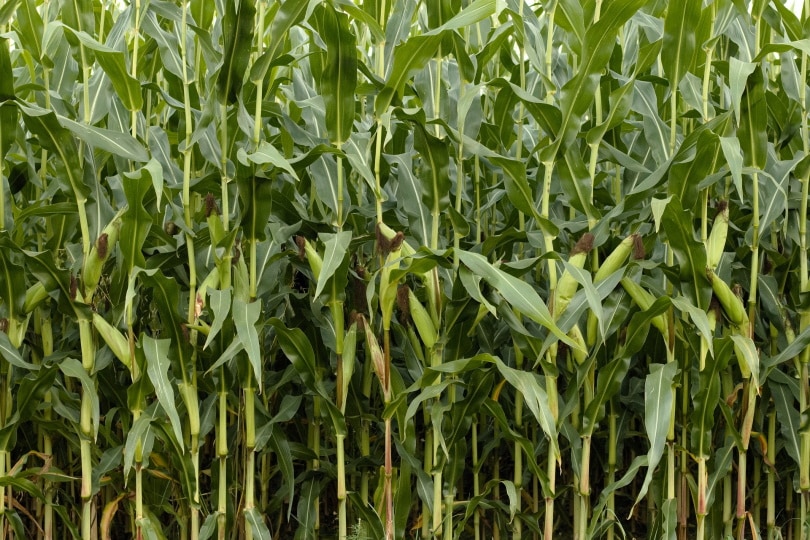
Pest and Disease
- Cutworms
- Corn earworms
- European corn borers
- Cucumber beetle larvae
- Seed-corn maggots
- Birds, raccoons, and other small animals
- Corn smut
- Stewart’s wilt
Most of these problems can be avoided with proper garden care and planning. However, they may also require the use of pesticides or herbicides. If that’s the case, it’s best to consult with a local nursery for the best solution in your situation.
Harvesting
Eventually, your hard work pays off, and it’s time to enjoy the fruits of your labor. When the corn silks first appear, wait around 3 weeks before you begin testing for ripeness. To check, peel back a portion of the husk and pinch a kernel. If the liquid that quirts out is milk, they’re ready to pick.

Popular Corn Varieties to Grow
There are many different varieties of corn with several hybrid classifications that affect their appearance, flavor, and growth. Here are a few of the more popular varieties for the home gardener:
- Silver Queen: More disease-resistant than other varieties. This variety has white kernels and is a normal-sugar cultivar.
- Glass Gem: Kids love this ornamental variety for its multi-colored and semi-transparent kernels.
- Painted Mountain: This ornamental variety’s name comes from its classic maize colors.
- Luther Hill: This is a dwarf plant variety that produces normal-sugar corn with white kernels.
- Iochief: This is a mid-season variety that produces nice yellow kernels. The nice thing about a mid-season cultivar is that you can easily do an extended harvest rotation if you start early.
 Closing Thoughts
Closing Thoughts
Corn isn’t a difficult crop to grow as long as the climate is right. Not only is fresh corn a delicious addition to the dinner table, but some incredible ornamental corn varieties look lovely as well. Just remember, no frost and warm soil, and you’re well on your way to enjoying your own harvest of corn!
Featured Image Credit: Henry Barnes, Unsplash
Contents

